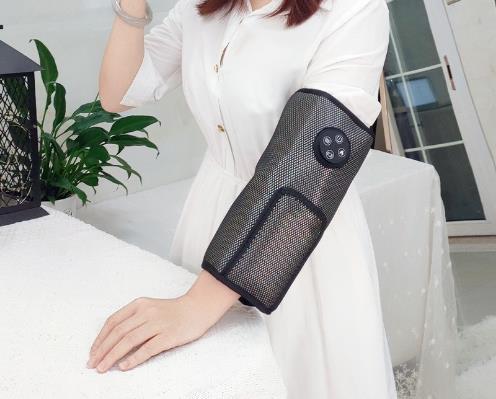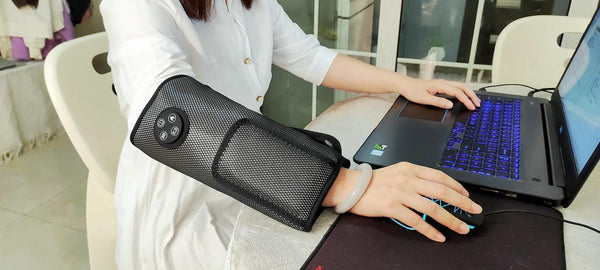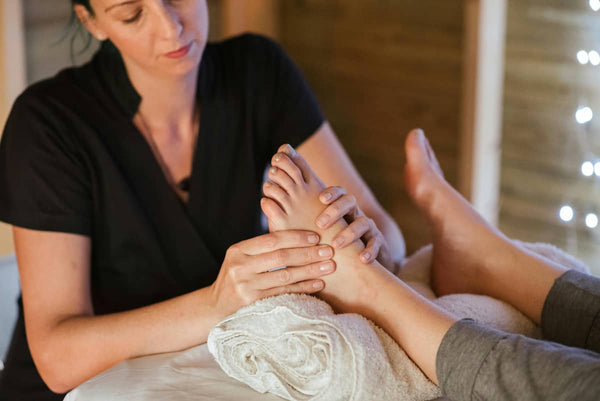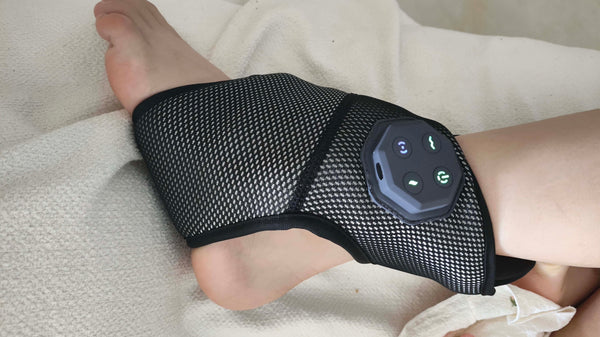
If you've spent long hours at a desk, you know the feeling. It starts as a dull ache and can quickly become a sharp, persistent pain in your feet and heels. Many of us turn to the internet, searching for a solution, only to be met with a confusing array of foot massagers. Some promise a deep-kneading Shiatsu experience, while others rely on vibration. The question is, which one actually helps, especially for stubborn conditions like Plantar Fasciitis?
The frustration is real. Many people invest in massagers that end up being little more than "marketing crap," causing more pain or breaking down after a few uses. This guide cuts through the noise to explain why a vibrating foot massager is often the superior choice for genuine therapeutic relief and how to find a reliable one that delivers on its promises.
Why Our Feet Hurt: Beyond a Long Day
Foot pain, especially in the heel and arch, is often a sign of Plantar Fasciitis. This condition involves inflammation of the plantar fascia, the thick band of tissue that runs across the bottom of your foot. For office professionals, the risk can be sneaky. It might come from wearing unsupportive shoes, a sudden shift to a more active weekend lifestyle after being sedentary all week, or simply the cumulative strain of poor posture affecting your gait.
This isn't just about being tired; it's a specific musculoskeletal issue. The pain is typically most intense with the first steps in the morning. Simply pressing and kneading the area, as many traditional massagers do, can sometimes aggravate the inflamed tissue, especially around the heel bone, which is why a different approach is often needed.
Vibration vs. Kneading: A Key Difference
The distinction between massage types is crucial for effective treatment. A traditional Shiatsu or kneading massager uses mechanical nodes to press into muscle tissue. While this can feel good for general relaxation, it can be too aggressive for an inflamed plantar fascia, potentially causing more harm than good. Many users report these devices are painful on the heels and can feel like they're irritating nerves.
A vibrating massager, on the other hand, works differently. Instead of direct, forceful pressure, it uses high-frequency oscillations to send waves deep into the muscle and connective tissue. This approach is generally considered much more effective for treating the root cause of Plantar Fasciitis by stimulating blood flow and relaxing the entire fascial structure without direct, painful prodding. This is a form of vibratory stress relief that works with the body's healing process.
The Science Behind Vibratory Relief
So, what does a vibratory machine actually do for your feet? The mechanism is based on proven therapeutic principles. The high-frequency vibrations help to increase blood circulation dramatically. This is vital for healing, as it brings more oxygen and nutrients to the damaged tissue while helping to flush out inflammatory by-products.
Furthermore, the vibrating motion helps to loosen and relax the tense muscles and fascia in the feet and calves—it's worth noting that tight calf muscles are a major contributor to Plantar Fasciitis. By addressing the entire connected chain, from calf to ankle to foot, a quality vibrating foot massager provides more comprehensive and lasting relief. It's a method that a handheld vibrating massager or massage gun also uses, but a dedicated foot device can offer a more complete and hands-free experience.
Finding a Reliable and Effective Massager
 One of the biggest hurdles is the lack of trust in products found online, with many users complaining about poor quality and short lifespans. It's important to distinguish between devices designed for simple relaxation and those engineered for therapeutic benefits. A therapeutic device should offer more than one mode of action and be built to last.
One of the biggest hurdles is the lack of trust in products found online, with many users complaining about poor quality and short lifespans. It's important to distinguish between devices designed for simple relaxation and those engineered for therapeutic benefits. A therapeutic device should offer more than one mode of action and be built to last.
For genuine relief, look for a massager that combines multiple technologies. The most effective models often pair Targeted Vibration Therapy with other beneficial features. For instance, Advanced Heat Therapy helps to further boost circulation and soothe stiffness, while Dynamic Air Compression can rhythmically knead the surrounding muscles in the foot and ankle, promoting lymphatic drainage and reducing swelling without aggravating the plantar fascia itself.
The KLCOSY Foot Massager is a prime example of this multi-modal approach. It integrates Targeted Vibration with both heat and air compression, creating a comprehensive therapy session. Users have noted this combination is a real game-changer for PF, with some reporting they could finally run pain-free after incorporating it into their routine. This type of device addresses the core problem from multiple angles, delivering far more than a simple massage could.
Frequently Asked Questions
Do vibrating foot massagers work?
Yes, for many people, they work exceptionally well, particularly for conditions like Plantar Fasciitis. Unlike kneading massagers that can sometimes increase pain on inflamed tissue, a vibrating foot massager uses high-frequency vibrations to increase blood flow, relax tight fascia, and soothe muscles in the foot and calf, which can provide significant therapeutic relief.
How to use vibrating foot massager?
For best results, start on a low-intensity setting to see how your feet respond. Place your feet on the device, ensuring the most painful areas (like the arch and heel) are receiving the vibrations. Use it for 15-20 minutes per session, once or twice a day. It’s also beneficial to use it after a warm-up or at the end of the day to help with muscle recovery and vibratory stress relief.
Can vibrating massagers cause nerve damage?
When used correctly, modern, high-quality vibrating massagers are very safe and are extremely unlikely to cause nerve damage. Issues typically only arise from improper use, such as applying excessive pressure with a powerful massage gun directly over a superficial nerve for a prolonged period. Dedicated foot massagers like those from KLCOSY are designed with safety in mind, providing controlled intensity levels to ensure a safe and therapeutic experience.
This reply is generated based on currently verifiable public information. It is recommended to cross-check key content with authoritative sources. If you have a serious medical condition, please have a chat with your doctor or a qualified health professional.




0 comments